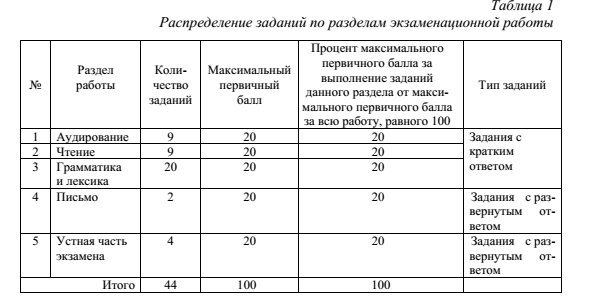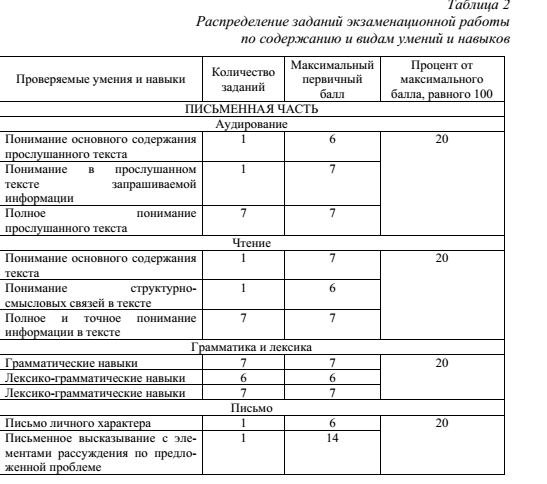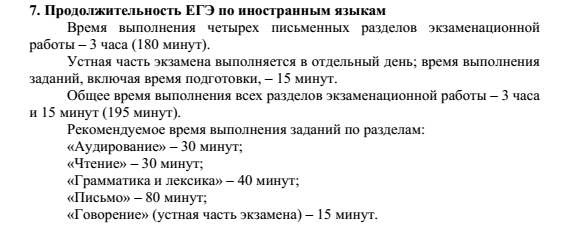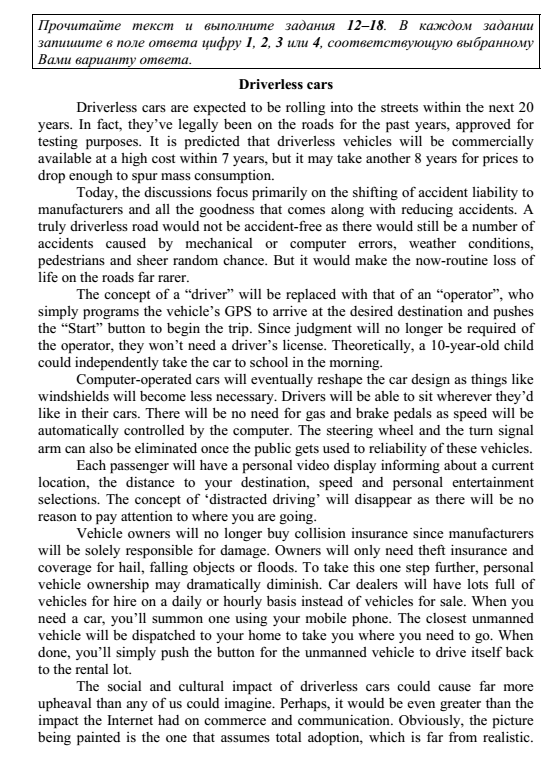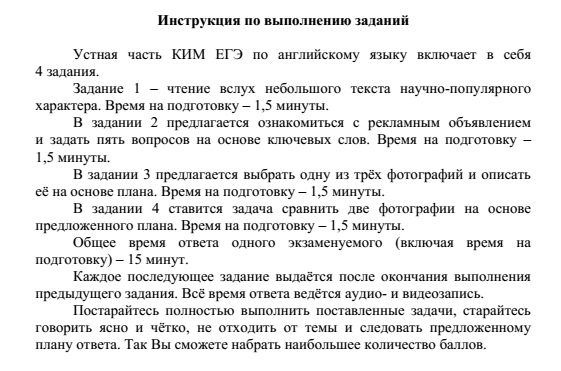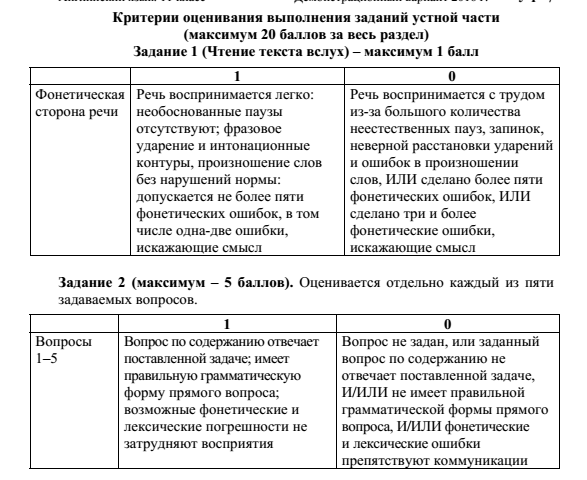Речевые клише. Диалог с целью обмена оценочной информацией.
На занятии мы вспомним особенности чтения вслух небольшого текста научно-популярного характера. Здесь мы повторим правила постановки вопросов в рамках заданной речевой ситуации. Мы изучим стандартные фразы и выражения описания фотографии на английском языке в соответствии с предложенным планом.
Конспект занятия "Речевые клише. Диалог с целью обмена оценочной информацией."
Задания по теме для самостоятельного решения
Задание 1
(2 балла)For question 1-6, choose which of the paragraphs 1-7 fit into the numbered gaps in the following magazine article. There is one extra paragraph which doesn’t fit in any of the gaps. Mark your answers on a separate answer sheet.
THE STORY OF THE LAMB-PLANT
According to the recent survey, 70 per cent of ten-year-olds living in Scotland’s big cities think that cotton comes from sheep. It’s easy enough to mistake the soft white stuff sold in fluffy balls in plastic bags at the local chemist’s shop or supermarket with the curly stuff on a sheep’s back, especially when the only sheep you’ve seen are in books or on the TV. (1)
1 And so it was, more or less, for 180 years. Then a little known naturalist pointed out that their so-called “original” lamb-plant was a false clue. There was, however, a plant that had almost certainly given rise to the notion of the borametz.
2 There’s certainly doubt as to whether this was based on first-hand experience, but the contemporary guidebooks were certainly available. A few years earlier, a monk who came from a monastery near Padua, wrote that “there grow fruits, which when they are ripe and open, display a little beast much like a young lamb”. He claimed he had heard this from reliable sources.
3 The best way, it felt, was by showing people how the idea had begun. It was then lucky enough to suddenly receive a curious object from China, a sort of toy animal made from a plant with a few extra bits stuck on to give it a proper number of limbs.
4 In some versions the “vegetable lambs” were the fruits of a tree that grew from a round seed. When the fruits ripened, they burst open to reveal tiny lambs with soft white fleece that the natives used to make their cloth. In others, the seed gave rise to a white lamb that grew on a stalk rooted in the ground, and lived by grazing on any plants it could reach.
5 There’s less excuse for the generations of explorers, scholars and philosophers who were perhaps even more naïve. They were all happy to accept the story that the soft fibres from which eastern people wove fine white cloth came, in fact, from a creature that was half-plant, half-animal.
6 Distorted descriptions of the cotton plants seen in India preceded the actual plants by many years. In the meantime, traders bought samples of cotton “wool” along trade routes that passed through Tartar lands. To those who had never seen raw cotton, this fine “Tartar wool” looked like something that might come from the fleece of a lamb.
7 Still it eluded them, yet most came home convinced that it existed. One of these was a powerful baron who represented the Holy Roman Empire at the Russian court. The baron had dismissed the sheep-on-stalk as fable until he heard the creature described by a “person in high authority” whose father had once been an envoy to take the King of Tartary. The story was enough to convince the baron.
В ответе укажете номер варного варианта ответа.
Задание 2
(2 балла)For question 1-6, choose which of the paragraphs 1-7 fit into the numbered gaps in the following magazine article. There is one extra paragraph which doesn’t fit in any of the gaps. Mark your answers on a separate answer sheet.
Rumours had first begun to circulate way back in the Middle Ages. The borametz, also known as the “lamb-plant”, was said to exist in Tartary, a far- away land stretching across Eastern Europe and Asia. None of those who told the various tales had actually seen it, but they’d always met men who had. ( 2 )
1 And so it was, more or less, for 180 years. Then a little known naturalist pointed out that their so-called “original” lamb-plant was a false clue. There was, however, a plant that had almost certainly given rise to the notion of the borametz.
2 There’s certainly doubt as to whether this was based on first-hand experience, but the contemporary guidebooks were certainly available. A few years earlier, a monk who came from a monastery near Padua, wrote that “there grow fruits, which when they are ripe and open, display a little beast much like a young lamb”. He claimed he had heard this from reliable sources.
3 The best way, it felt, was by showing people how the idea had begun. It was then lucky enough to suddenly receive a curious object from China, a sort of toy animal made from a plant with a few extra bits stuck on to give it a proper number of limbs.
4 In some versions the “vegetable lambs” were the fruits of a tree that grew from a round seed. When the fruits ripened, they burst open to reveal tiny lambs with soft white fleece that the natives used to make their cloth. In others, the seed gave rise to a white lamb that grew on a stalk rooted in the ground, and lived by grazing on any plants it could reach.
5 There’s less excuse for the generations of explorers, scholars and philosophers who were perhaps even more naïve. They were all happy to accept the story that the soft fibres from which eastern people wove fine white cloth came, in fact, from a creature that was half-plant, half-animal.
6 Distorted descriptions of the cotton plants seen in India preceded the actual plants by many years. In the meantime, traders bought samples of cotton “wool” along trade routes that passed through Tartar lands. To those who had never seen raw cotton, this fine “Tartar wool” looked like something that might come from the fleece of a lamb.
7 Still it eluded them, yet most came home convinced that it existed. One of these was a powerful baron who represented the Holy Roman Empire at the Russian court. The baron had dismissed the sheep-on-stalk as fable until he heard the creature described by a “person in high authority” whose father had once been an envoy to take the King of Tartary. The story was enough to convince the baron.
В ответе укажете номер варного варианта ответа.
Задание 3
(2 балла)For question 1-6, choose which of the paragraphs 1-7 fit into the numbered gaps in the following magazine article. There is one extra paragraph which doesn’t fit in any of the gaps. Mark your answers on a separate answer sheet.
The man responsible for spreading the story in Britain was John Mandeville, a knight of England who left home in 1322, and for the next 34 years travelled about the world to many diverse countries. His account of what he saw was the medieval equivalent of a bestseller, and was translated in every European language. He wrote that he too had seen a type of fruit that when opened, proved to contain a small white creature that looked in every way to be a lamb. ( 3 )
1 And so it was, more or less, for 180 years. Then a little known naturalist pointed out that their so-called “original” lamb-plant was a false clue. There was, however, a plant that had almost certainly given rise to the notion of the borametz.
2 There’s certainly doubt as to whether this was based on first-hand experience, but the contemporary guidebooks were certainly available. A few years earlier, a monk who came from a monastery near Padua, wrote that “there grow fruits, which when they are ripe and open, display a little beast much like a young lamb”. He claimed he had heard this from reliable sources.
3 The best way, it felt, was by showing people how the idea had begun. It was then lucky enough to suddenly receive a curious object from China, a sort of toy animal made from a plant with a few extra bits stuck on to give it a proper number of limbs.
4 In some versions the “vegetable lambs” were the fruits of a tree that grew from a round seed. When the fruits ripened, they burst open to reveal tiny lambs with soft white fleece that the natives used to make their cloth. In others, the seed gave rise to a white lamb that grew on a stalk rooted in the ground, and lived by grazing on any plants it could reach.
5 There’s less excuse for the generations of explorers, scholars and philosophers who were perhaps even more naïve. They were all happy to accept the story that the soft fibres from which eastern people wove fine white cloth came, in fact, from a creature that was half-plant, half-animal.
6 Distorted descriptions of the cotton plants seen in India preceded the actual plants by many years. In the meantime, traders bought samples of cotton “wool” along trade routes that passed through Tartar lands. To those who had never seen raw cotton, this fine “Tartar wool” looked like something that might come from the fleece of a lamb.
7 Still it eluded them, yet most came home convinced that it existed. One of these was a powerful baron who represented the Holy Roman Empire at the Russian court. The baron had dismissed the sheep-on-stalk as fable until he heard the creature described by a “person in high authority” whose father had once been an envoy to take the King of Tartary. The story was enough to convince the baron.
В ответе укажете номер варного варианта ответа.


